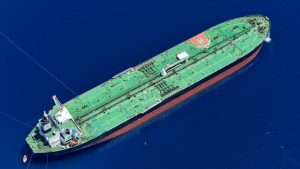The Gulf Arab states have delivered a firm rebuke to the United States, refusing to allow their air bases or airspace to serve as a staging ground for potential American military strikes against Iran. This decision, confirmed by multiple regional sources, has forced the US to pivot to its remote Diego Garcia base in the Indian Ocean, where B-2 stealth bombers are now being amassed.
Saudi Arabia, the United Arab Emirates, Qatar, and Kuwait have all informed Washington that their territories and skies are off-limits for any offensive operations targeting Iran, including refueling missions or search-and-rescue efforts, according to a senior Pentagon official who spoke anonymously due to the sensitivity of the matter.
“They’ve made it clear they won’t be dragged into a war with Iran,” the official told Global Pulse. “This isn’t about logistics—it’s about survival for these regimes.”
The Gulf states’ stance marks a significant hurdle for President Donald Trump’s administration, which has escalated its rhetoric against Tehran in recent days. Trump threatened over the weekend to unleash devastating strikes on Iran if it refuses to bow to US demands for a new nuclear deal. The administration had hoped to leverage Gulf bases—home to tens of thousands of US troops and advanced air assets—to project power and pressure Iran into negotiations.
Instead, the Gulf monarchies’ refusal has exposed cracks in the US’s regional alliances at a critical moment. Analysts suggest that Iran could interpret this disunity as a sign of weakness, potentially emboldening its defiance on the nuclear issue.
A Shift to Diego Garcia
With Gulf bases sidelined, the US has turned to Diego Garcia, a secretive atoll in the Indian Ocean, as its fallback. Satellite imagery from Planet Labs, circulated widely on X this week, revealed at least three B-2 bombers stationed at the base, with some open-source analysts estimating as many as five. The B-2, capable of carrying massive “bunker-buster” bombs, is a cornerstone of any potential US strike on Iran’s fortified nuclear sites.
Located roughly 5,300 kilometers from Iran—well within the B-2’s 11,000-kilometer range with refueling—Diego Garcia offers a workaround to the Gulf states’ restrictions. The base’s isolation also reduces the risk of Iranian retaliation against US allies in the region, a factor that weighed heavily on Gulf leaders’ calculations.
This isn’t the first time the US has leaned on Diego Garcia when Gulf cooperation faltered. During the 1990s, when Saudi Arabia barred its bases from being used for strikes on Iraq, the Indian Ocean outpost became a key launchpad for American air campaigns.
Gulf States’ Cold Feet
The Gulf monarchies’ reluctance stands in contrast to their earlier willingness to support US-led strikes against the Houthis in Yemen. A former State Department official, speaking anonymously, told Global Pulse that several Gulf states had quietly allowed their bases to be used for those operations, including critical recovery missions for downed aircraft.
But Iran is a different beast. “The Houthis are a manageable threat,” the former official said. “Iran has the capability to hit back hard—oil fields, cities, infrastructure. The Gulf states know they’d be the first in the crosshairs.”
Iran has not been shy about flexing its retaliatory muscle. In October 2024, it warned Gulf states that their oil facilities would be targeted if they aided Israeli or US strikes. The 2019 drone and missile attack on Saudi Aramco facilities—widely attributed to Iran—remains a stark reminder of Tehran’s reach. Though Gulf-Iran relations have thawed since then, the monarchies appear unwilling to test Tehran’s patience.
Trump’s High-Stakes Gamble
Trump’s “maximum pressure” campaign against Iran has seen a flurry of military and diplomatic moves. In March, US officials met with Saudi and Emirati counterparts to rally support, while approving arms sales to Qatar (MQ-9 Reaper drones) and Saudi Arabia (precision-guided rocket systems). Trump has also floated a May visit to the region to shore up ties.
Meanwhile, US military activity in the Middle East has spiked. Flight tracking data shared on X shows a 50% increase in cargo flights to bases in Jordan and the Gulf since the October 2023 Hamas attack on Israel ignited a broader regional conflict. Two US aircraft carriers, including the USS Carl Vinson redeployed from the Pacific, now patrol Middle Eastern waters.
Yet the Gulf states’ refusal to play ball could undermine Trump’s strategy. By relying on Diego Garcia, the US avoids triggering Iran’s threats against Gulf oil infrastructure, but it also loses the psychological edge of a united front with its Arab allies.
Iran’s Counterplay
Iranian military planners are reportedly weighing their options. The Telegraph reported this week that some commanders advocate pre-emptive strikes on Diego Garcia, though Iran’s ballistic missiles—officially capped at a 2,000-kilometer range—fall short of the base. Analysts like Behnam Ben Taleblu of the Foundation for Defense of Democracies suggest Tehran could turn to proxies like the Houthis, equipped with longer-range weapons, or deploy ship-launched drones and cruise missiles to threaten the island.
For now, the US buildup—40,000 troops across the Gulf, F-16s and F-35s in Saudi Arabia, MQ-9 drones in the UAE, and Central Command’s headquarters in Qatar—remains a potent deterrent. But as Trump pushes for a “full dismantlement” of Iran’s nuclear program, the Gulf states’ sidestepping may force a reckoning: Can the US go it alone against Iran, or will its threats prove hollow without regional backing?








Be First to Comment